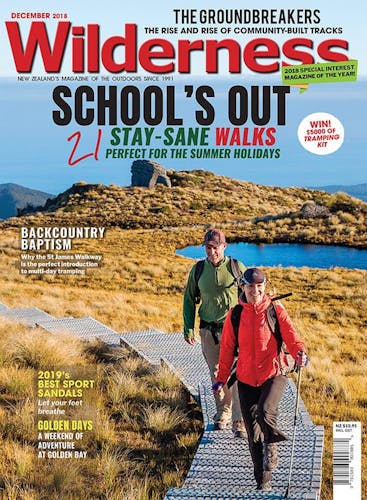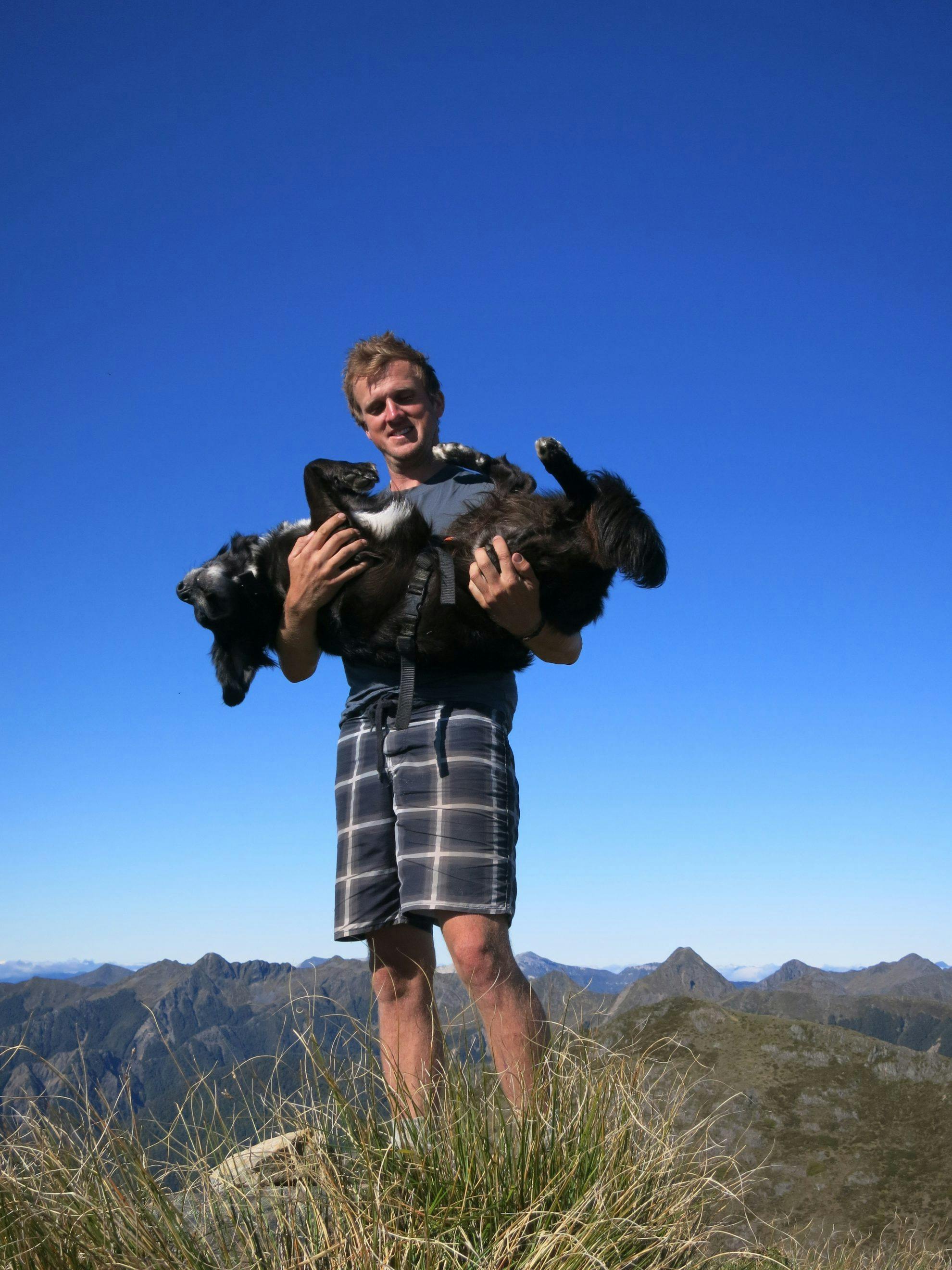Corey Mosen and his dog Ajax have been hunting kea in a bid to save the species.
Camping out for days at a time and working in the bush with a dog by your side sounds like a tramping dream, but it’s just another day in the office for Corey Mosen.
For the past eight years, Mosen’s job has involved finding kea nests and monitoring the species, exploring off-track from Nelson to Fiordland in search of the cheeky parrot.
Mosen started a career with kea after developing a strong desire to work with animals in the backcountry.
“I loved being around the mountains and I was also really keen on monkeys,” Mosen recalls. “I’d spend hours watching them at the zoo. I figure keas are like New Zealand’s equivalent of monkeys.
They are just as cheeky and intelligent, and they’ve all got very individual personalities.”
After studying zoology, Mosen worked at a zoo before becoming a builder in Whanganui. During his time off, he would volunteer for the Kea Conservation Trust, building the foundations for his new career.
“Working as a vet or in a zoo didn’t excite me very much,” he says. “I knew I wanted to work in the wilderness and I would volunteer every chance I got.”
Mosen later got a job with DOC. After working with a conservation dog handler, he realised the benefit of having a canine companion in the bush and set about training his own kea dog. He got Ajax, a border collie-catahoula cross seven years ago and began training him. After three years, Ajax passed DOC’s strict test and their working relationship began. Ajax is able to indicate a kea nest and detect whether there is a bird on the nest or whether it has been abandoned.
A 1080 drop makes a significant
difference to fledgeling rates for two years.
“He’s made the job way more enjoyable and easier,” Mosen says. “We’ve learned to work with each other and we anticipate each other’s moves – he knows exactly what I’m after and he’s happy to please.”
Mosen says a typical day involves heading off track and setting up camp on the tops in kea country – usually in Nelson Lakes and Kahurangi national parks, but the job takes the pair throughout the kea’s range. They then spend a couple of days walking through valleys, navigating off-track trying to either pick up a signal from a tagged kea, monitor an existing nest, or find a new nest.
“I’m usually bush bashing or walking along mountain tops. The nests are always in the forest, they’re never above the treeline, and they’re always accessible from ground level. They’re usually in what I call the Goldilocks zone of the valley, where it’s not too cold and not too exposed, at about 1000m.”
Mosen has now released a book, Ajax the Kea Dog, which details their adventures and highlights the plight of the species. Kea numbers are thought to be about 5000, but the broad range of the bird and challenging terrain it inhabits make it difficult to get accurate figures. Mosen says ongoing predator control is the only way the birds will be able to rebound.
“A big part of my job is investigating how kea respond to predator control, and we’ve found a 1080 drop makes a significant difference to fledgeling rates for two years.”
Mosen’s advice for anyone wanting to develop a career working with native species in the backcountry?
“Stick at it and if you ever get a chance to get out there and prove yourself, give it your all. I’ve had heaps of volunteers and I have got a lot of them jobs because they’ve shown a keen attitude.”








